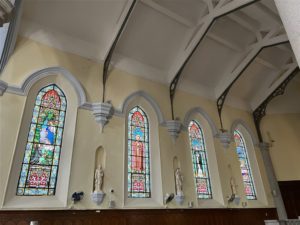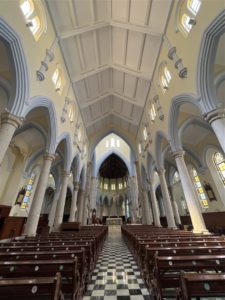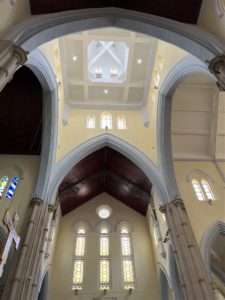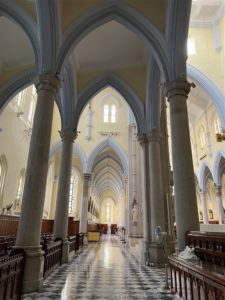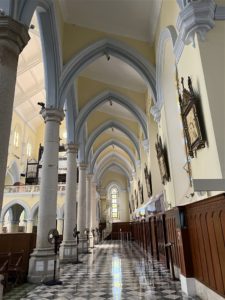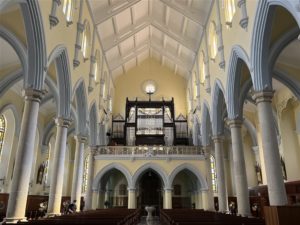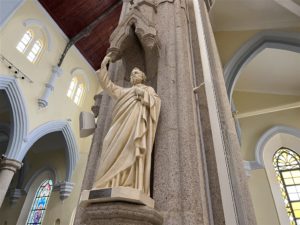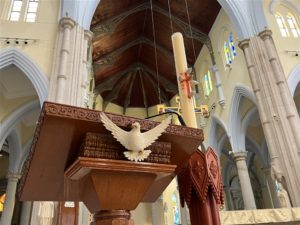The Cathedral of Immaculate Conception

The Cathedral of Immaculate Conception serves as the cathedral of the Roman Catholic Diocese of Hong Kong. Its predecessor at Wellington Street was the first Catholic Church in Hong Kong.
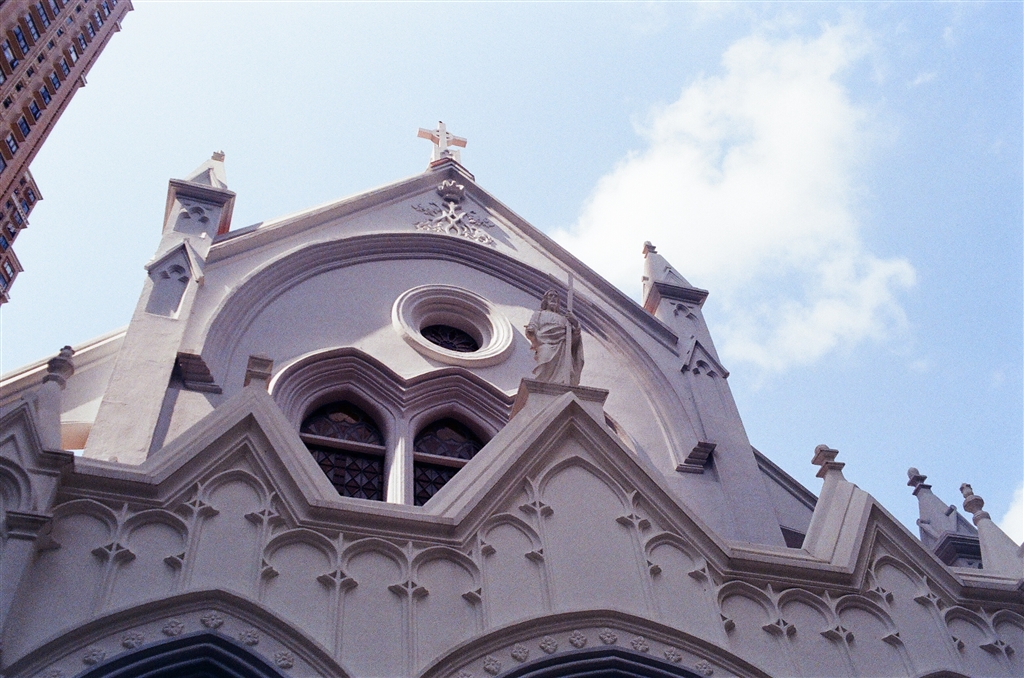
History
The Cathedral of Immaculate Conception has the same beginning as British Hong Kong. In 1841, Britain took over Hong Kong Island during the First Opium War. Rome immediately set up a Prefecture Apostolic directly under its own supervision. A group of missionaries from Macao came to Hong Kong to set up a mission house. Thereafter, they built the church on Wellington Street. The congregation grew tremendously during this time.
In 1859, a fire broke out and the cathedral was burned to the ground. With donations from sympathetic followers and benefactors, the church underwent reconstruction soon. However, by the 1870s, the congregation had outgrown the premises. Another fire in 1878 threatened the church’s structure again. Around that time, Rome had also elevated the status of the prefecture into Vicariate Apostolic. The time was ripe for a new structure in a permanent site. The former Cathedral of Immaculate Conception on Wellington Street held its last Mass in May 1886.
During the late 1800s, Caine Road was a very popular neighborhood for Catholic initiatives. There were orphanages, schools, and mission houses there. In 1880, the Catholic Mission purchased the Glenealy Estate on 16 Caine Road. This would become the new site for a permanent Cathedral of Immaculate Conception.
In 1888, construction for the Cathedral of Immaculate Conception completed. On December 7, 1888, the church opened its doors again, a day before the Feast of the Immaculate Conception.
At the time, the Cathedral stood as the centerpiece amidst a strong Catholic presence on Caine Road. At some point the Bishop’s House, Nam Wah College, Wah Yan College, St Joseph’s Terrace and St. Joseph’s Home stood near. As time progressed, the Cathedral itself came to stand on its own, as the other Catholic buildings had to make way for high rise, luxurious developments on a prime location in the property market.
Finally, the church had its consecration on December 8, 1938. It was one of the first to be consecrated in China.
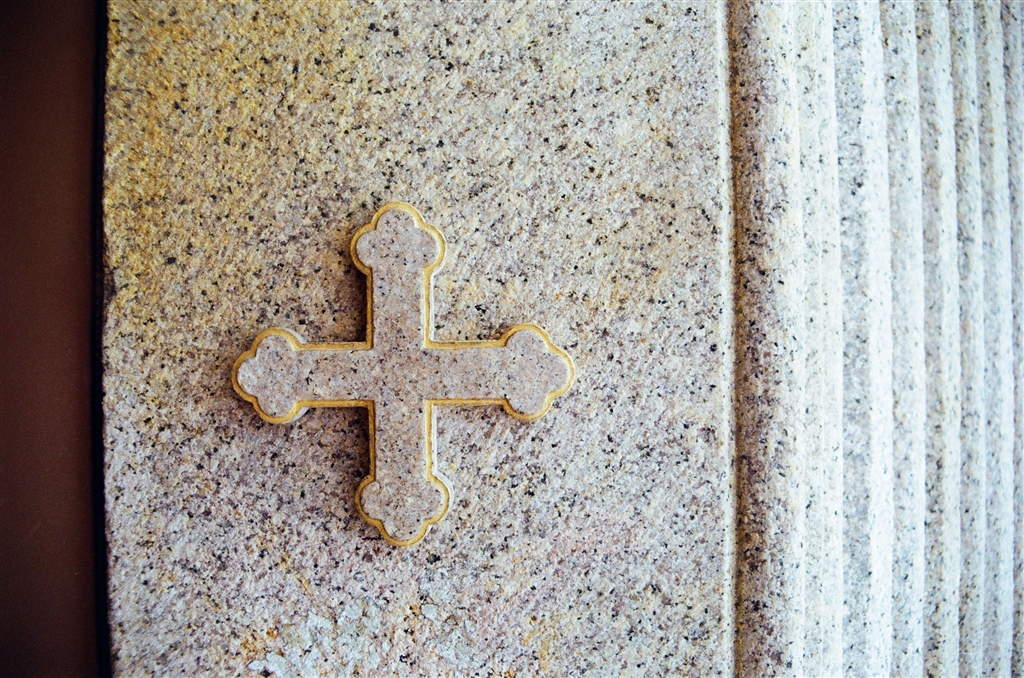
Architectural Features of the Cathedral of Immaculate Conception
The Cathedral of Immaculate Conception on Caine Road was designed by Crawley & Company of London in the English Gothic style. Louis Ha gave a detailed description of the structure:
The cathedral is in the form of a Greek cross. Its north side is shorter than the south, a situation dictated by the shape of the land itself on which it stands. It measures 82 metres in length and is 40 metres wide, with a seating capacity of over 1,000. It rises to a height of 23.7 metres, except for its central tower which adds another 10 metres, creating a feeling of ample space and ventilation… Its walls are of brick and stone, laid on a granite platform… Buttresses run down both of its sides. (Louis Ha at 36)

Today, the three original marble altars remain on-site at the Cathedral of the Immaculate Conception. These marble altars were moved from the former site on Wellington Street. They are very much the testament to the cathedral’s long, sustained heritage in Hong Kong. It acquired the status of Grade 1 historic building in 1990.
There are four cathedral chapels as well, namely the Sacred Heart Chapel, the Chapel of Our Lord’s Passion, the Chapel of St. Joseph, and the Chapel of St. Anthony. The three original marble altars of Wellington Street are all in these cathedral chapels.
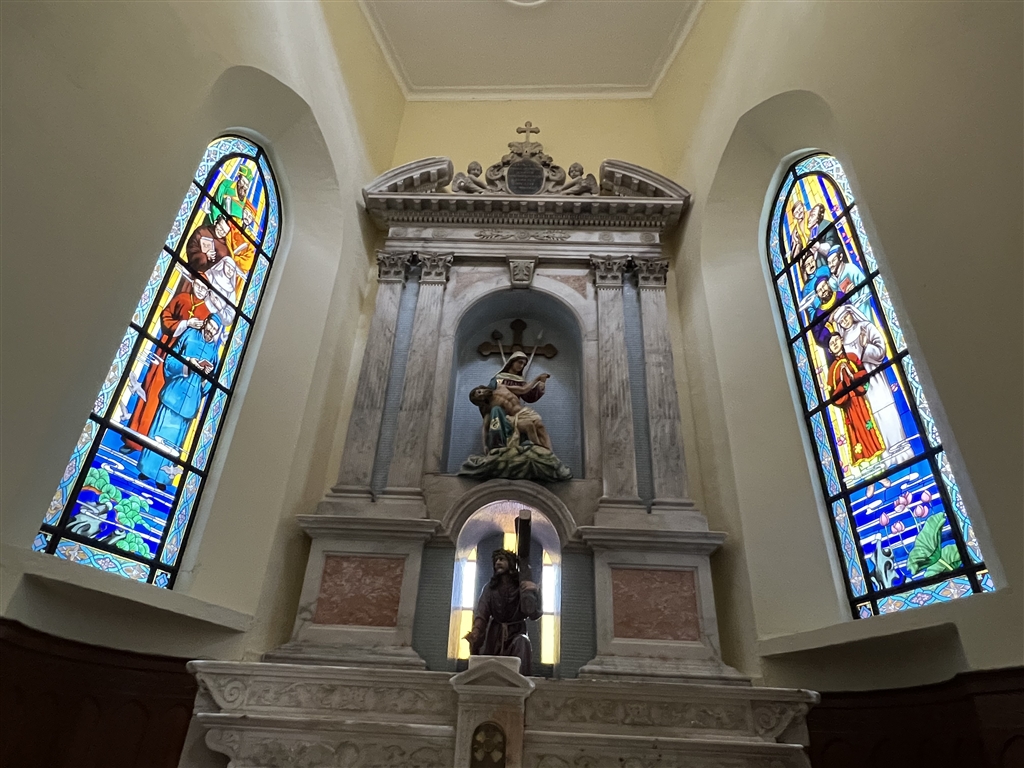
I thought the stained glass lining the two sides of the Cathedral were also beautiful. They came to the Cathedral at a much later time, however. The four windows near the Sacred Heart Chapel was done by French artist Louis Gesta in 1923. Opposite them, the stained glass by the Chapel of St. Joseph features the four gospel writers of Matthew, Mark, Luke and John. The stained glass were made in Italy and donated by Mr. John Poon in 1985.

The Visit
On a Saturday afternoon I visited the Cathedral of Immaculate Conception. It was a very sunny day and I was delighted in seeing the dense foliage of the neighborhood. The entrance to the Hong Kong Zoological and Botanical Gardens is right at the doorstep of the Cathedral of Immaculate Conception as well.
The afternoon sunlight cast upon the Cathedral’s elegant contours. Standing in midst of luxurious high rises, the Cathedral’s distinctive architecture gleams a divine light upon this neighborhood. It is solemn here. Immediately, I felt comfort in my heart. I noticed that the front door of the church has been named The Door of Mercy, in celebration of the Jubilee of Mercy in 2015-2016. It bears a reference to John 10:9.
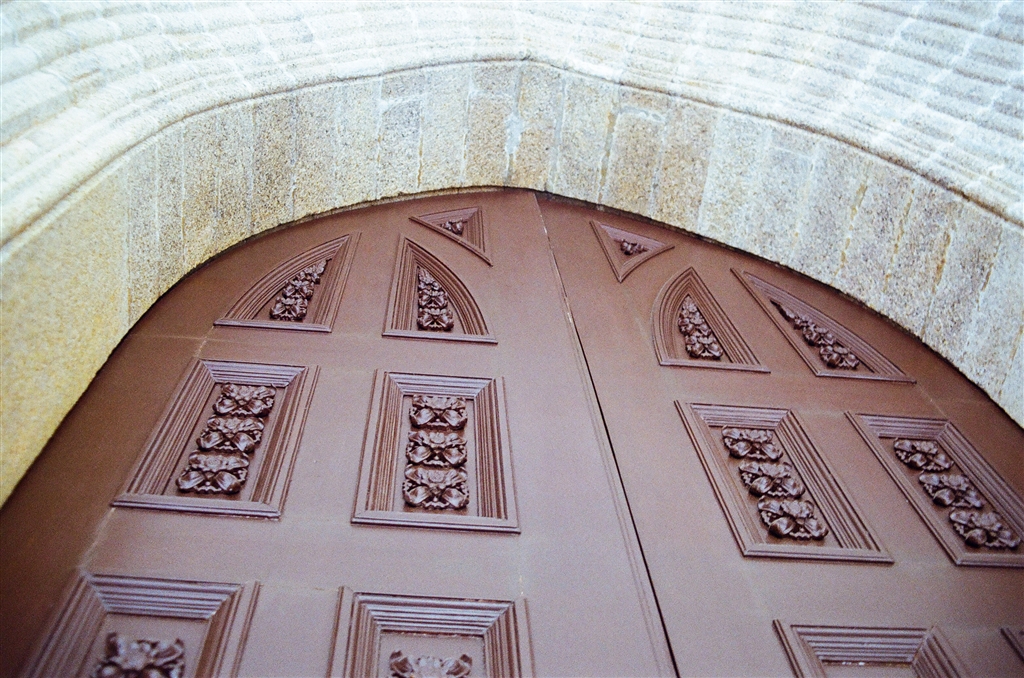
The exterior walls are in white, or a very pale gray, with occasional orange-pinkish details on some of the rooftops. This minimalist use of colors draws my attention to the sculpted details on the structure. The Gothic style of architecture is a style of “pointed arch, pointed rib-vaults… deep buttresses, window tracery, pinnacles, spires…” (Curl & Wilson on Gothic). I checked all these boxes. Although I lack the training in appreciating the significance of these features, they are certainly very pleasing to the eyes.
The Cathedral would just be a “colonial era building” to me, if I did not have to write this entry.
I stiffened my back and my dress before entering the nave.

The churches and cathedrals in Hong Kong cannot be compared to their antecedents in Europe in terms of architecture, scale, size and interior. That said, however, the relatively modest structure and adornment of the cathedrals in Hong Kong have a beauty of its own. I find the modesty to be more appealing to me personally, than the grand cathedrals in Europe. At the Cathedral of Immaculate Conception, I experienced calmness, restfulness, renewal and an unmistakable awareness of God’s presence. Whereas in most of the cathedrals in Europe, the imposing ornateness brought about a kind of holy glory that necessarily humbles you. I mostly felt awe there, though that is but a different experience.
I went around and quickly took some photographs. After about ten minutes, I could finally enjoy the serenity at the pew. And I really only sat there, all still, for half an hour.

I also found the line of confessionals, carved out of wood, to be a very special feature. According to Louis Ha, these confessionals replaced the original side altars only after the liturgical reforms of Vatican II initiated during the 1960s. I do not recall seeing such an extensive row of confessionals within the main structure of a cathedral before.
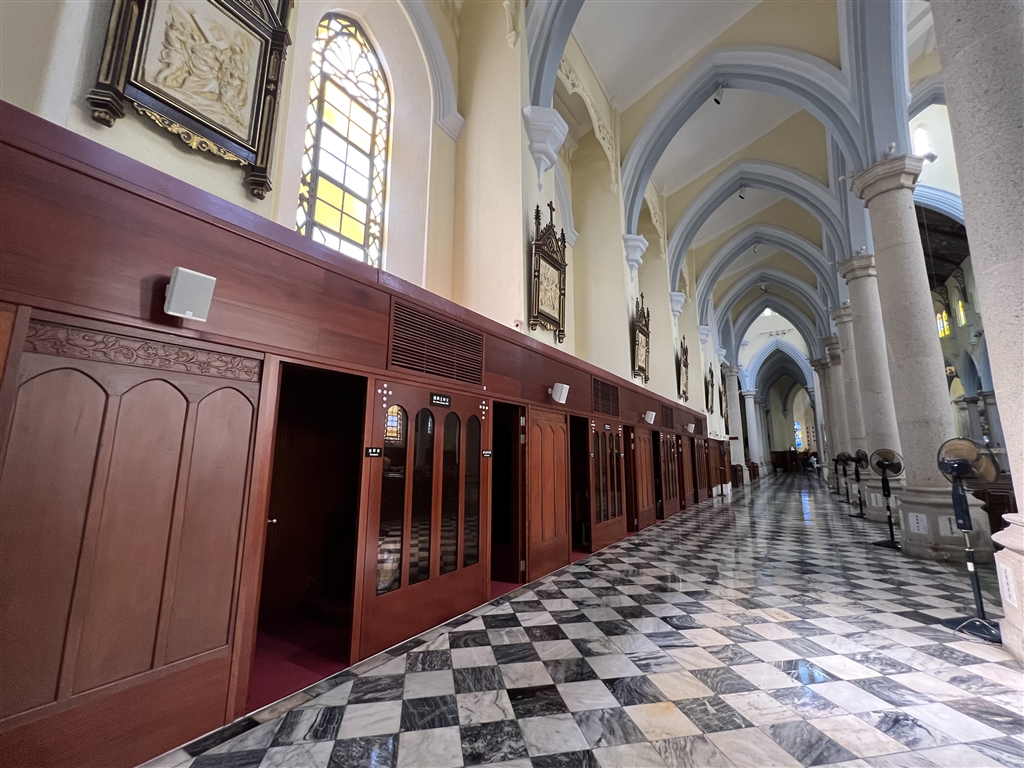
Reminder
During the opening hours (see below), one may enter the Cathedral. As with all religious sites, it is meant to be a place of sanctity. Please be respectful. Dress appropriately for it. No open toe shoes, no tank tops. Bring a shawl to cover the bare shoulders if you plan on wearing a tank top. Remove hats when you are inside. Remain quiet and calm inside the nave.
How to Get There
Bus Routes 12, 12M, 13, 23, 103, 40M and 40 stop at the Caritas House. Head toward Glenealy after getting off at the bus stop. Walk a few steps upward on St. Joseph’s Terrace and you will see the Cathedral of Immaculate Conception on your right. It is behind the Caritas House.
The address is 16 Caine Road.
The Cathedral of Immaculate Conception opens daily from 7am to 7pm.
Sources
Louis Ha, 110 Year In the Grace of Our Lord (1999).
Catholic Diocese of Hong Kong, Cathedral of Immaculate Conception (Caine Road), cathlicheritage.org.hk.
The Wikipedia on the Cathedral of Immaculate Conception.
Curl & Wilson, The Oxford Dictionary of Architecture (2015).


